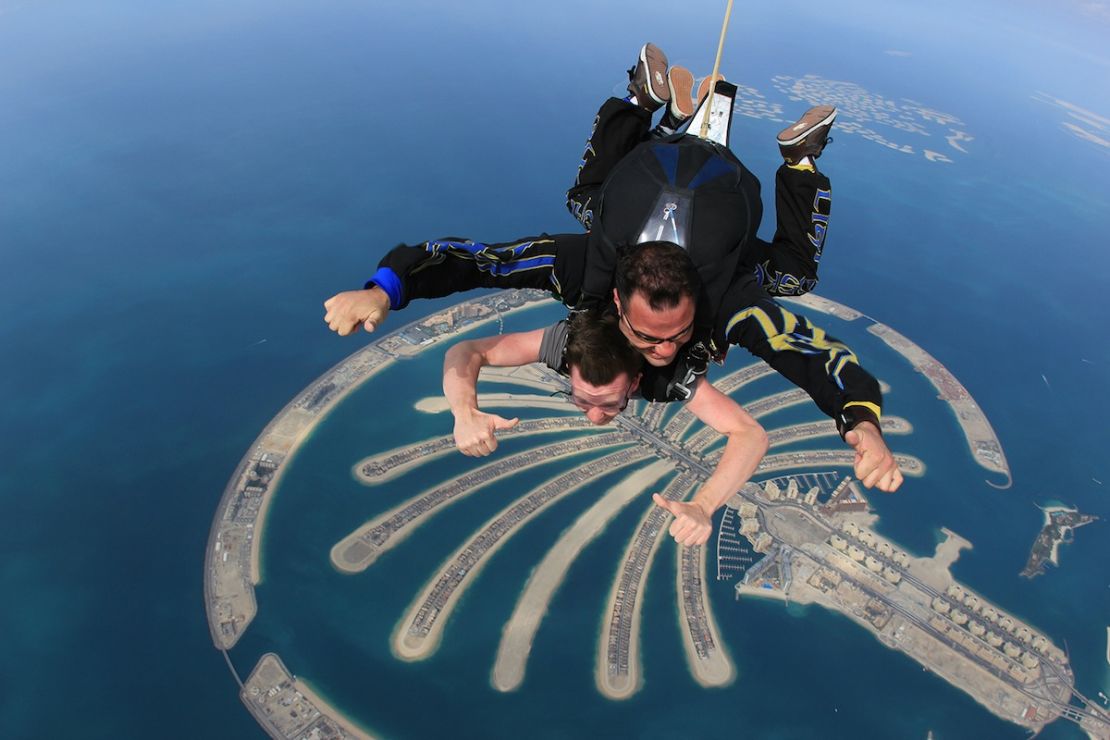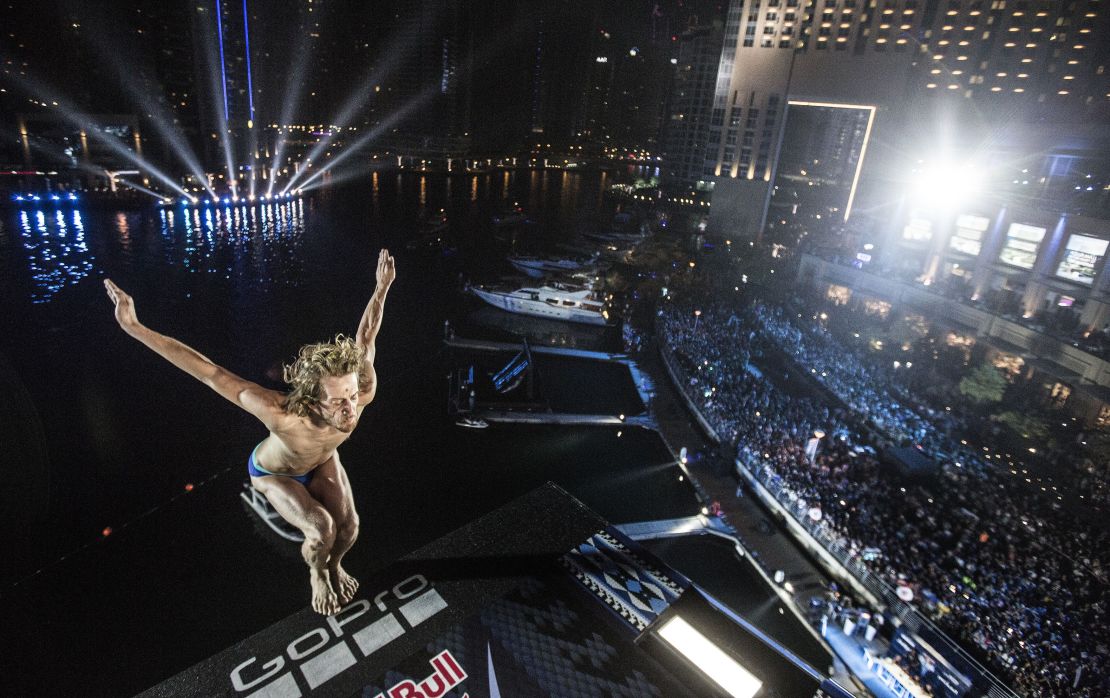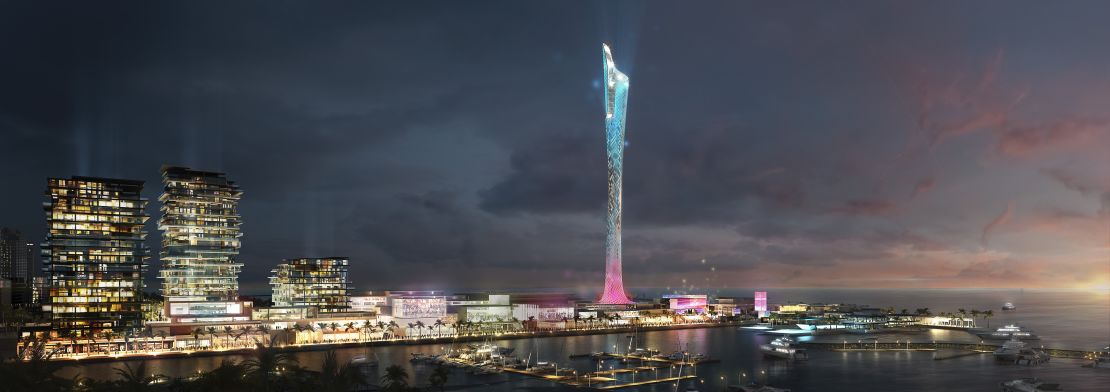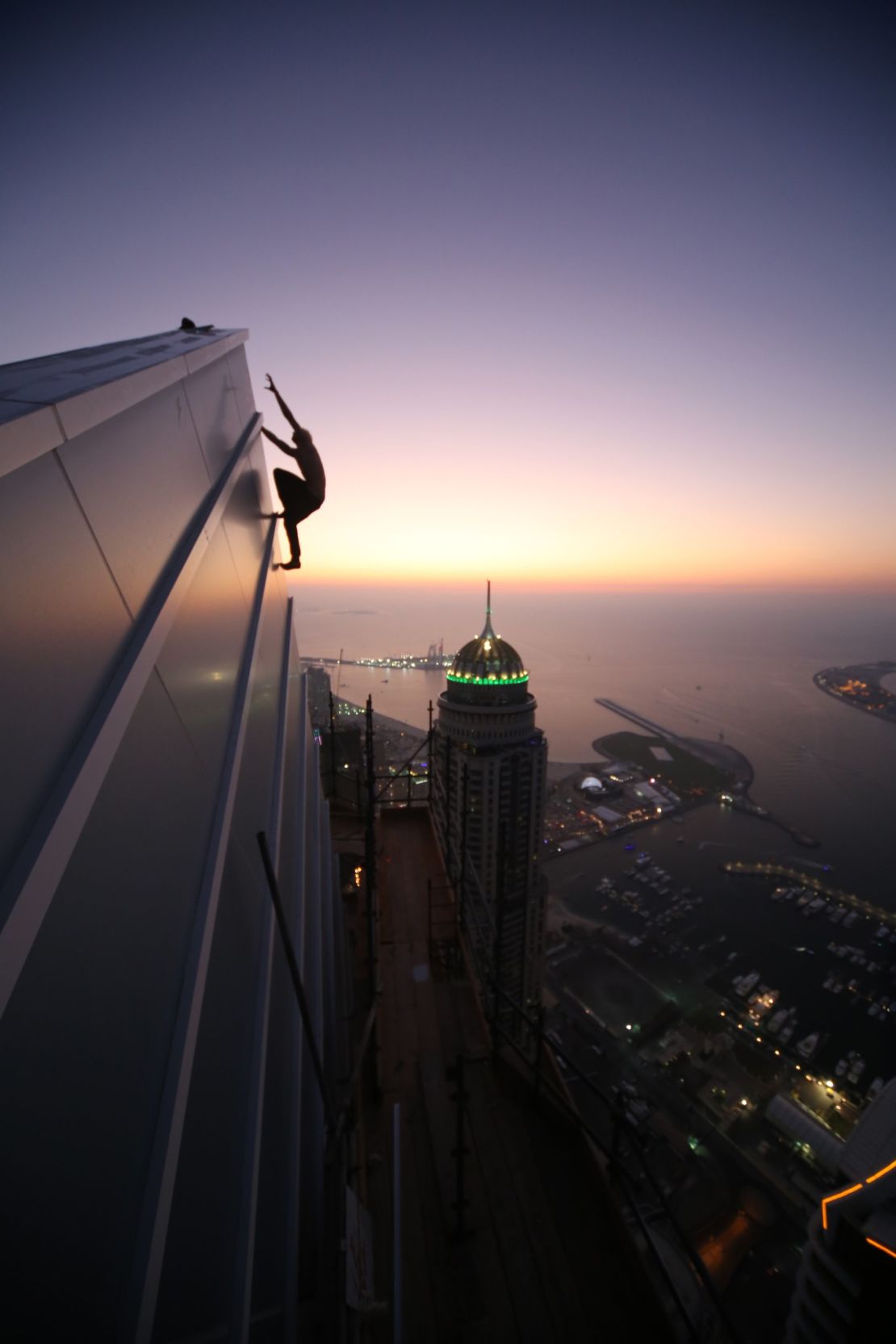“Build it and they will come” has been the philosophy in Dubai since the city went into architectural overdrive at the turn of the 21st century.
What this city of superlatives might not have anticipated is how it would be used by its inhabitants.
As towers have stacked up and new heights scaled, through design or coincidence Dubai has become a playground for adrenaline junkies, who “travel” the city via land, sea and air.
What better way to see the Palm Jumeirah than by jumping out of a plane? Easiest way to get across downtown: zip line. Dubai’s most epic vantage point? The top of the Burj Khalifa – from the outside.

Describing the city’s unique selling point, Chris Jones, who recently gave a presentation on “The Architecture of Adrenaline” at the Dubai Smart Skyscraper conference, says “Dubai has had to create an environment whereby people can come and do things they wouldn’t normally otherwise do.”
He has a point. A quick online search provides an exhausting (if non-exhaustive) list of ways Dubai can get your heart racing: Skydiving, sandboarding, dune bashing, skiing, snowboarding, bungee jumping, shark diving, fly boarding, microlighting, motorcar racing, scuba diving, jet skiing, quad biking, dune buggying, mountain biking, paddle boarding, ziplining, gyrocoptering, rally driving, dirt biking, speed boating, wakeboarding, surfing, wingwalking and zup boarding. (No, we hadn’t heard of that last one either.)
So where does architecture fit in?
The extreme sports industry has augmented Dubai’s architecture for a variety of tent-pole events – a launch pad built onto the Burj Khalifa for BASE jumping in 2014, or a dive platform in the marina for the Red Bull Cliff Diving series in 2016, for example.

However Dubai could soon see a shift, with extreme sports shaping the city’s skyline permanently.
Architecture firm 10 Design have proposed a concept for a colossal BASE jump tower on the Dubai waterfront. Over 1,000 feet high, the design features multiple jumping platforms, interior rock climbing walls and abseiling points, with a concert venue, residential towers and retail space attached. It’s a jungle gym of epic proportions, and its raison d’etre is adrenaline.

“It’s part of our culture nowadays,” says Jones, also a partner at 10 Design. “Extreme sports and (an) adrenaline rush is a desire for a lot of people. The society and the culture and the architecture has to respond to that.”
There’s a strong argument for regulated facilities like the tower. As with many extreme sport hotspots, Dubai has seen its fair share of illegal pursuits. The city is hardly unique in this sense – a shoot-first-and-ask-questions-later approach is at the heart of the extreme sports ethos, pushing boundaries’ as well as testing authorities’ patience.

Case in point: In 2008, Briton Dave McDonnell and late Frenchman Herve Le Gallou both accessed the Burj Khalifa building site disguised as engineers and BASE jumped from 155 floors. Gallou’s fake ID badge read “Base Technician – Specialist Fast Downward Moving Elevators,” reported the New York Times.
But authorities have since warmed to the publicity potential in these stunts. Six years later, the city in collaboration with Skydive Dubai invited Soul Flyers World Champions Fred Fugen and Vincent Reffet to the Burj to break the official record for the highest BASE jump from a building. Alain Robert, the “French Spiderman,” most known for climbing superstructures without permission, was invited to climb the same building in March 2011.
If Dubai loves anything it’s a superlative, and the world of extreme sports offers plenty of records to be broken. The efforts of Robert, Fugen and Reffet, while remarkable for them, only burnish the credentials of the city’s architecture further.
“(Dubai Municipality) recognize that it’s something that will attract people and attention (to) the city,” says Jones.
Whether 10 Design’s tower will be built remains to be seen, but “the fact that these events are happening … would suggest they assist and are open to such ideas, which is great.”
Pending approval from their anonymous client, Jones admits that financially the business model only “stacks up” when revenue from its surrounding facilities is factored in. Plus, government permission would be required for BASE jump activities, he says.

There’s nothing to suggest a lack of public appetite, however.
“There’s a huge focus on extreme sports in the region, supported by all the different social groups within the city,” Jones argues – Emiratis, expats and tourists alike, of all ages.
Time will tell if this remains on the drawing board, or if the complex will kick-start an extreme sports-first approach to future Dubai building projects.
But for a desert city that boasts a shark tank and ski slope in its mall, a climbing frame which would be the 26th tallest tower in the world is nothing if not on message.





















